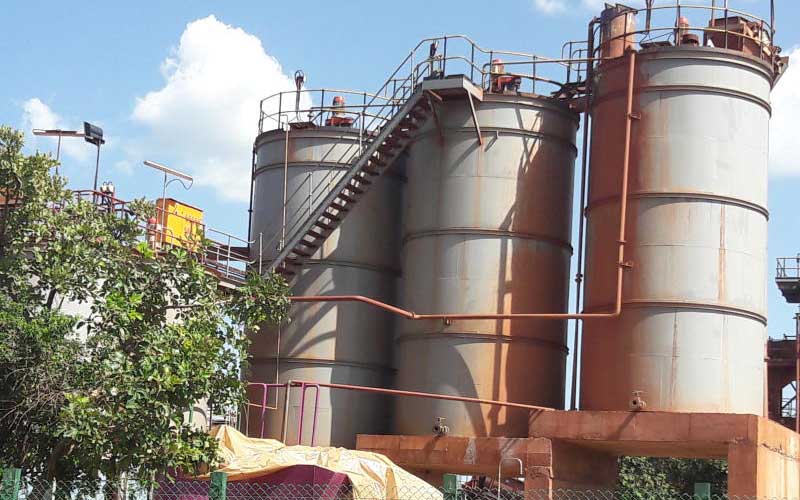At the beginning of the last decade, mining was sold as a formidable sector with potential to change Kenya’s fortunes.
The country believed it was firmly on the path to earn trillions from more than 77 different minerals buried beneath the surface.It was around this time that the country shipped out its first export of titanium ore, Canadian firm Cortec would discover huge deposits of niobium at Mrima Hills and the UK-based Goldplat would set up the Kilimapesa gold plant in Narok.
The industry had a standalone ministry, all these painting the picture of a sector that would be key to the Kenyan economy, even if it did not match industries in mineral-rich countries such as South Africa.
Optimistic words such as metals commodity exchange, a national mining company and airborne geophysical survey were bandied around, cementing the idea that Kenya could indeed be a regional mining giant, even tap into the industries of other countries in the region.
In 2020, all that now appears a dream and Kenya is waking up to a reality of an industry that is fast fading. The mining ministry has since been merged with the State Department of Petroleum, as well as seen substantial declines in production of minerals that were the sector’s mainstay.
The industry could in the next three years lose the titanium ore industry as the mines in Kwale come to end of life. The firm that has been mining the ore, Base Titanium, is yet to get permission from the government to explore other nearby areas and possibly prolong the project.
Strategic investor
The Kwale mines account for 65 per cent of Kenya’s mining industry, raking in Sh20 billion of the Sh30 billion that the industry earned in 2018.Goldplat last May put its mines and gold production facilities in Narok under care and maintenance as it looks for a strategic investor for Kilimapesa.There has been no progress at Mrima Hills since Cortec was kicked out. A suit that the firm filed against Kenya at an international arbitration centre ruled in favour of the country.
According to Base Titanium, the Kwale ore mines it has been working on since 2014 have less than three years to be exhausted. The firm has sought a variation in the boundary of the current mine and an approval would expand to the south and add about a year to the project.“One area of focus for Base Titanium going forward is our mine’s life constraint. We are down to 35 months of mine life,” said External Affairs General Manager Simon Wall.
The firm has been mining the ‘central dune’ within the larger mine which was exhausted last year. It then moved to the south dune, which has a lifespan of 35 months but can be extended by another 12 if it gets to widen the boundaries that are currently not covered by the current mining lease.Approvals have, however, been slow to come.
“There is an area further south of the mine which is outside the current mining licence where we have done exploratory drilling, found that there are ores and we now want to mine,” said Mr Wall.“We have asked the government to vary the boundary of the mining licence to encompass this area. It will not be a game breaker as it gives us just an extra 12 months of mining.“While it may not make or break anyone, it is important for a few reasons as it means an extra 12 months of jobs, extra tax revenues for the government and local expenditure in the economy.
But importantly, it buys us an extra 12 months to do additional work to try and find other extensions.”He says the boundary variation is uncontested. “If we don’t get it in three years, 65 per cent of the mining industry disappears. The MRB (Mineral Rights Board) deferred making a recommendation to the Cabinet Secretary.”The firm also plans to undertake studies north of the current mines – north dune – where exploratory drilling shows that there could be more titanium ore.
If further studies show that the area can be mined, the project may last another six years.“Best case scenario is we get a variation of the licence and get an additional year during which we can do work and progress the north dune. The dune can give us another six years… In all, we can have 10 years from now if all these things fall in place,” said Wall. “Worst case scenario is that mining stops in three years.
That would be bad for everyone.”If titanium ore minerals disappear from the roll of Kenyan exports in three years, it will join the likes of fluorspar, which was the third largest mineral produced locally after titanium and soda ash.
According to data by the Kenya National Bureau of Statistics, earnings from fluorspar went down to zero in 2018 from Sh2 billion in 2014. The Kenya Fluorspar Company, which was the largest producer, has since shut down due to a mix of poor global prices and political interference and handed the mines back to government.Other sub-sectors that have experienced a major production decline include soda ash where a tiff between Tata Chemicals and the Kajiado County Government over land rates have affected the firm’s operations.Kajiado has been demanding Sh17 billion in land rates for the 240,000 acres at Magadi where Tata Chemicals produces the mineral.
Under threat
Gold production is also under threat as Goldplat, which operates the Kilimapesa Gold Mine in Narok County, shut down the mine after failing to secure a strategic investor.Another casualty has been Karebe Gold in Nandi County. The firm could not secure a renewal of its land lease, with allegations of plots by politicians having influenced the decision so that they could take over the mines.
The firm, owned by a Zimbabwean investor, last year quit operations and laid off about 500 employees.“Everyone is being (used badly). It is quite upsetting considering the potential the industry has,” noted a source working on consultancy basis with some of the mining firms.The government has also not moved to develop the niobium deposits found in Mrima Hills after repossessing it from Cortec.
Reports upon discovery claimed that the area could have a ground value of up to $75 billion (Sh7.5 trillion) and may be one of the largest in the world outside of China and Brazil.The mineral is used in strengthening steel alloys and could be a strategic resource for the country.
“In 2013 there was a lot of excitement. It is fair to say that this excitement has not materialised into growth of the sector,” said the consultant.“Among the factors that have dampened this optimism include the drawn-out process of rewriting the mining laws and at the end of it we did not get an Act that was friendly to investors and one that was not a match for where we were in terms of the mining sector,” said the consultant.






